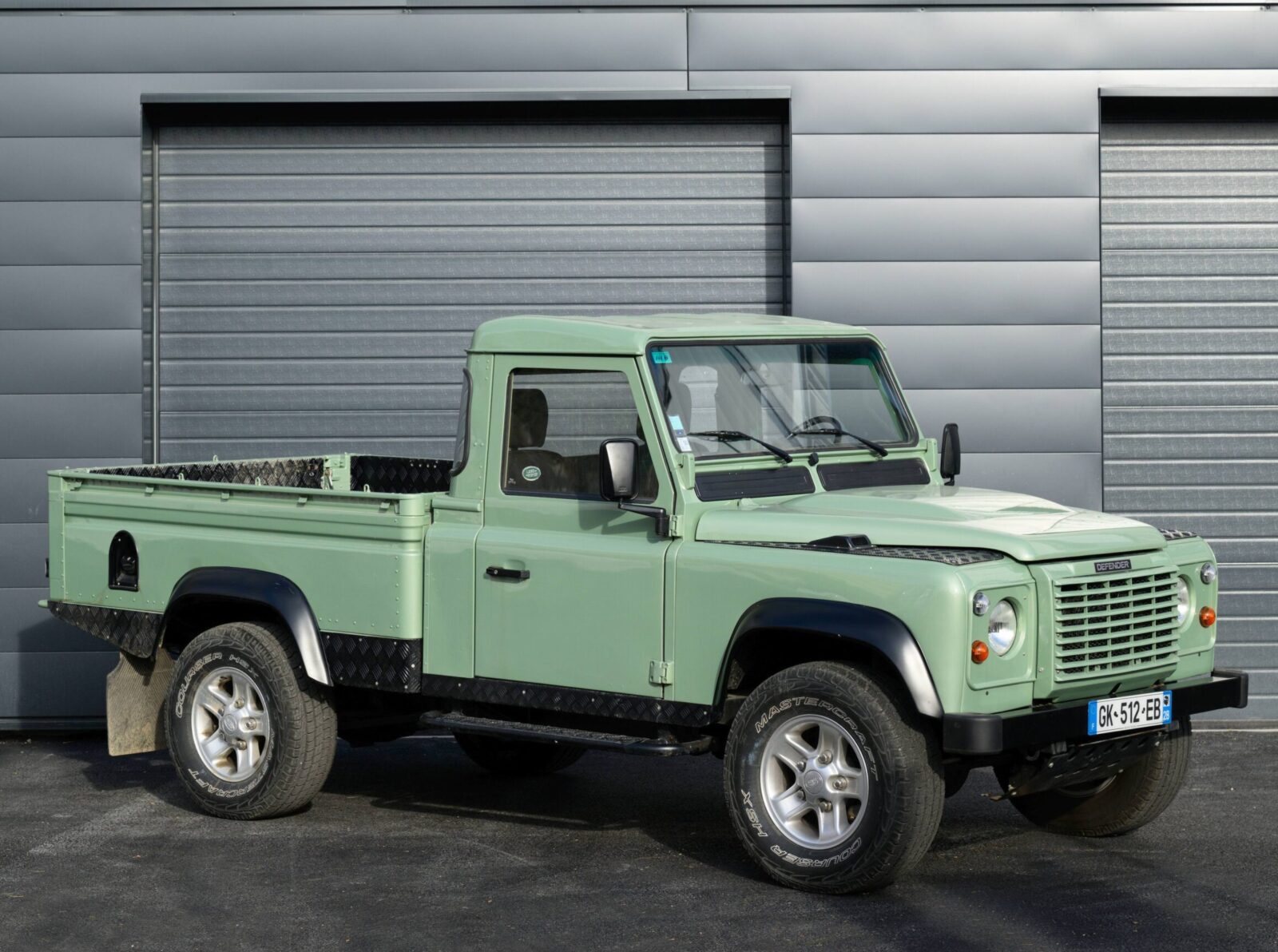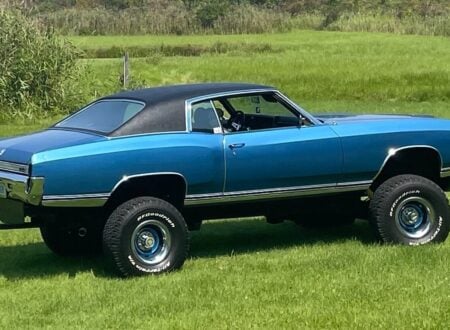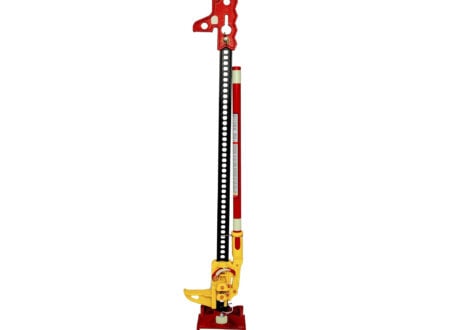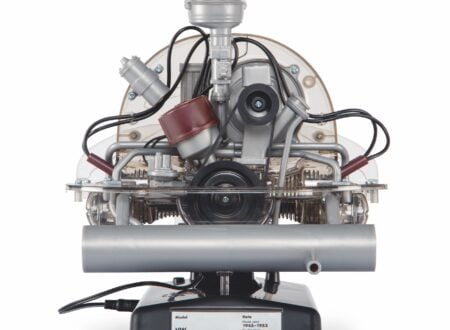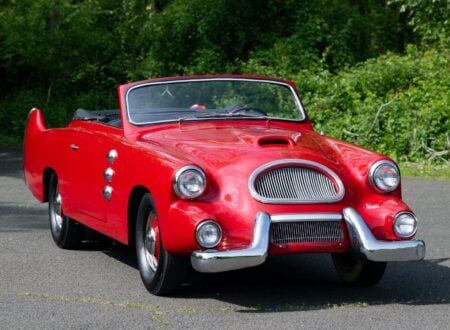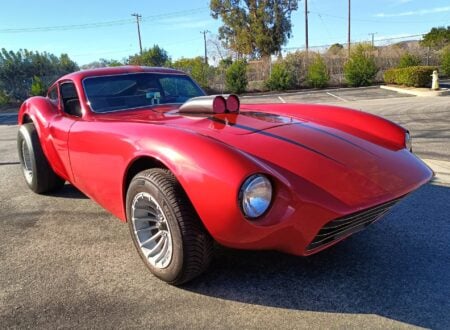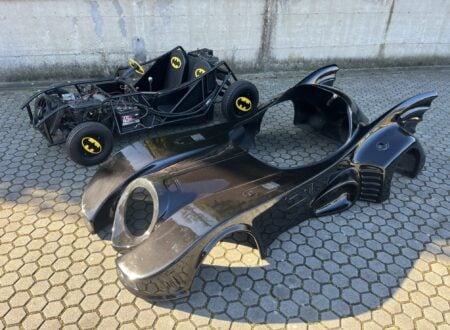This is a 1991 Land Rover Defender 110 Pick Up, it’s already one of the rarer Defender variants but this example takes it one further, as it’s also an original factory V8-powered vehicle.
Only a relatively small number of the Defenders that were built had V8 power, the vast majority were turbodiesel due to the fuel-economy benefits and high-mileage reliability. V8 Defenders were given modified versions of the Rover V8, an engine that powered everything from Paris-Dakar Rally racers and TVRs to stately luxury cars and the Morgan Plus 8.
Fast Facts – The Land Rover Defender 110 Pick Up
- The Land Rover Defender’s roots trace back to the original Land Rover Series I, introduced in 1948. This model was inspired by the World War II Willys Jeep and was designed to be a rugged, agricultural-focused vehicle. Over the years, it evolved through Series II and III models, gaining popularity due to its durability and off-road capabilities.
- The name “Defender” was officially introduced in 1990. Before this, the vehicles were known simply as the Land Rover Ninety or One Ten, reflecting their wheelbase lengths in inches. The introduction of the Defender name came shortly after the Land Rover Discovery was introduced, to help differentiate the two model lines.
- Throughout its life, the Defender was available with a variety of engines. Early models used four-cylinder petrol and diesel engines. Later, more powerful engines like the V8 petrol and the 200Tdi and 300Tdi diesels were introduced. In the 2000s, the Defender was fitted with the Td5 and then the Ford Duratorq engines, offering improved performance and efficiency.
- The Defender 110 Pick Up variant offered a unique combination of utility and off-road capability. Characterized by its long wheelbase and open rear cargo area, this version became popular for both commercial and agricultural use. It retained the tough character of the Defender while providing practical cargo-carrying capacity in the rear.
How The Name “Defender” Came To Be
When the Land Rover model we now know as the Defender was first released, it wasn’t actually called the Defender. The model debuted in 1983 in long wheelbase form and was simply called the “Land Rover One Ten,” named for its 110 inch wheelbase.
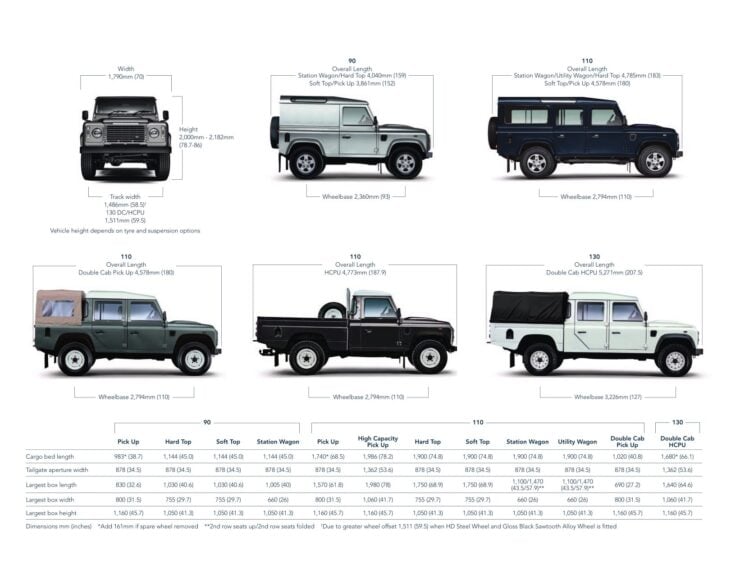

A year later in 1983 the short wheelbase “Land Rover One Ninety” was added, though it actually had a wheelbase of 92.9 inches. At this time, the Land Rover model range consisted of the Range Rover at the high end, and the One Ten and Ninety at the more work-oriented, blue-collar end.
As there were only these two key model families, the model names made sense and everyone was happy. This all changed in 1989 when an all-new model appeared – the Land Rover Discovery.
Now that Land Rover had three models in production it made sense to give them all their own distinct names and identities. As a result of this, in 1991 the name “Defender” was added to the Ninety and One Ten models, now formatted as “Defender 90” and “Defender 110.” There was also a longer wheelbase Defender 130 model.
The Defender name would remain for the model series right the way through until it left production in 2016 to be replaced by a the “New Defender.” That said, the original Defender is still being produced by Land Rover in a few small, very limited edition batches with pricing well into the low six figures for interested buyers.
The V8 Land Rover Defender 110 Pick Up
Pick up truck variants of the Defender model series (and the Series 1, Series 2 + 2A, and Series 3 models that came before) proved popular in both agricultural and industrial applications, but they sold in far lower numbers than their tin-top siblings.
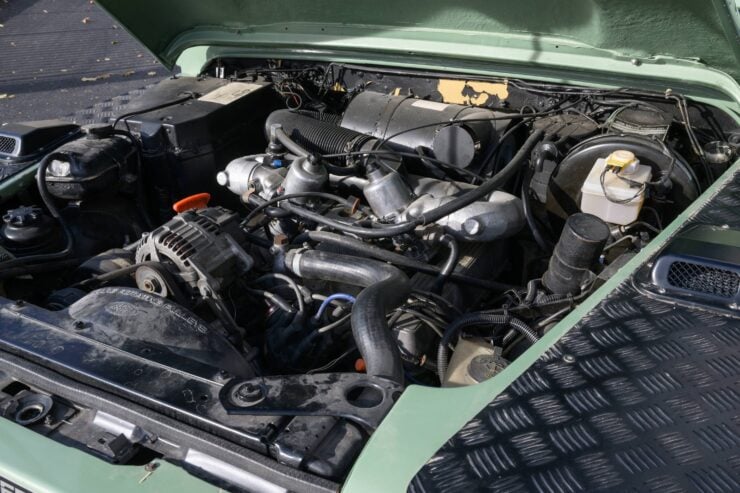

Interestingly, you could buy a pick up truck version of all three wheelbases including the 90, 110, and 130, though the cargo area in the 90 was somewhat limited. The 130 version was offered as a crew cab pick up, that is it had four doors and seating for five with the pick up truck rear, and the 110 version had two doors and seating for two as standard, with the option to also order in dual cab configuration if required.
A number of engine options were offered over the Defender’s production run, including inline four cylinder petrol and diesel engines, various turbodiesels, and most powerful of all, the Rover V8. The story of the Rover V8 is far too long to rehash here but we did do a comprehensive history on the engine here for those who are interested.
To cut a long story short, the Rover V8 started out as the Buick 215 cubic inch V8 which was introduced in the early 1960s. The engine was unique in that it was physically smaller than many other American V8s at 3.5 liters, and it had a block and heads made from aluminum, resulting in it being quite a lightweight.
British automaker Rover bought the rights and tooling to the engine, put it into production, and it quickly became the backbone of the British performance car world – powering many TVRs as well as cars from Marcos, Morgan, Ultima, MG, Triumph, Ginetta, and more.
The engine was also used in the Range Rover, Bowler Wildcat, Land Rover Discovery, and the Land Rover Defender. This resulted in the most powerful version of the Defender, however it came as standard only in US-specification examples – all others had to be special ordered and as a result there are far fewer V8s than turbodiesels.
The 1991 V8 Land Rover Defender 110 Pick Up Shown Here
The vehicle you see here is a Land Rover Defender 110 Pick Up variant, and it’s powered by a factory-fitted Rover V8. It was delivered new to the UAE but only used sparingly, in the intervening years it ended up in France with a new owner and fewer than 50,000 kms on the odometer, approximately 31,000 miles.
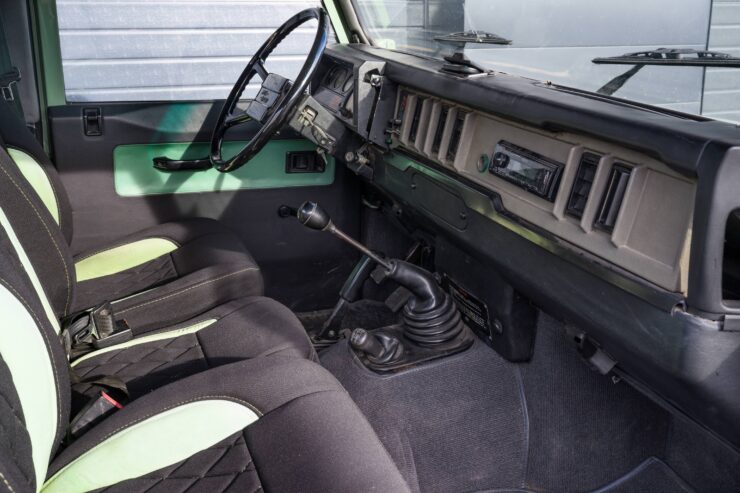

This Defender is finished in classic Green over a black and green interior with black carpeting, and black and green door cards. It’s a left hand drive example with a 5-speed manual transmission, and a dual range transfer case.
It’s now being offered for sale by Bonhams in an online auction, and you can visit the listing here if you’d like to read more or place a bid.
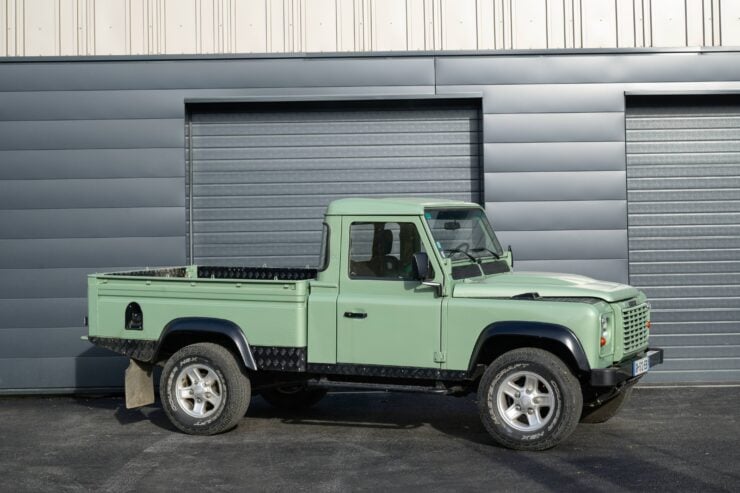
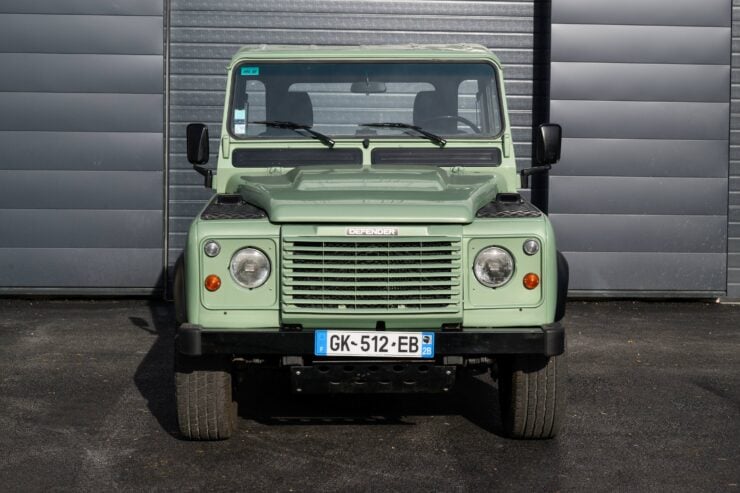
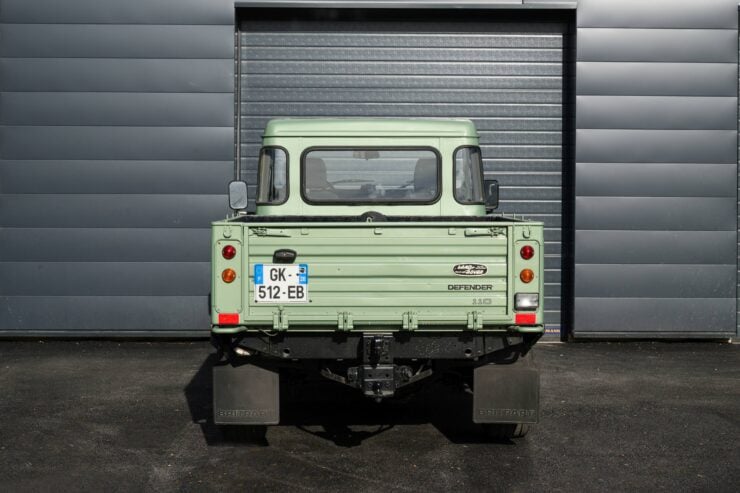
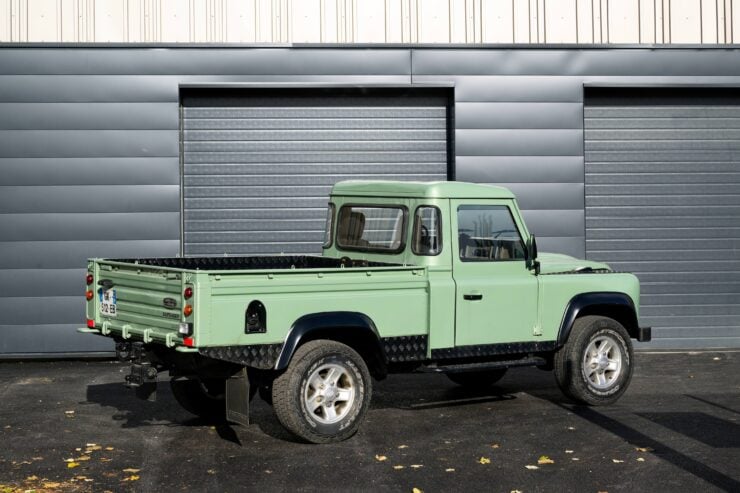
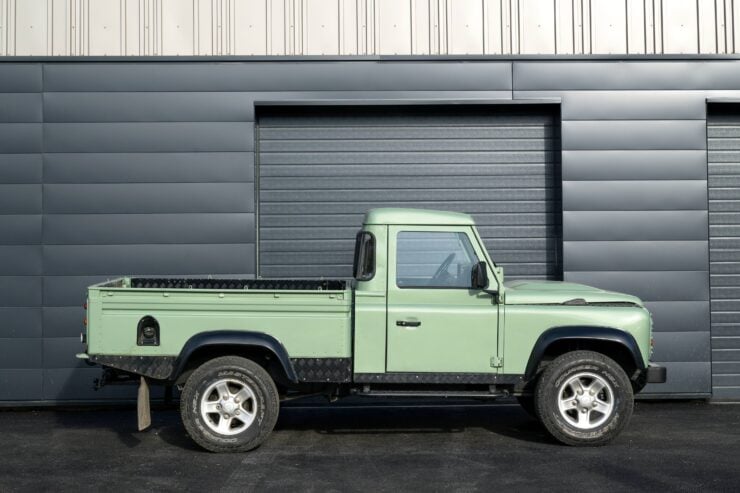
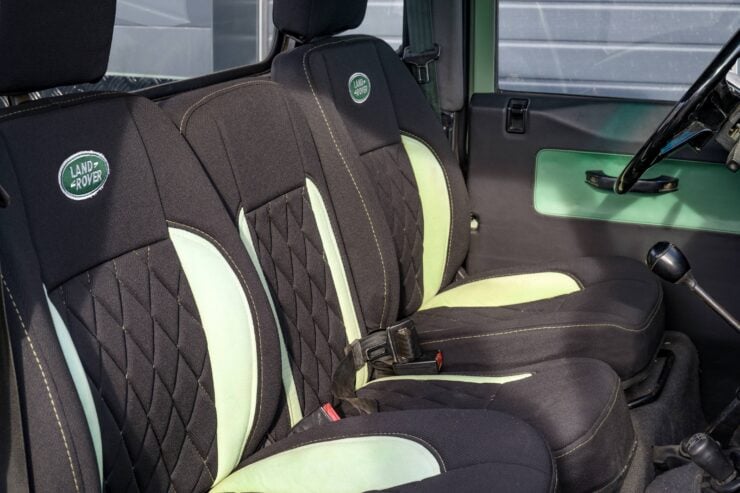
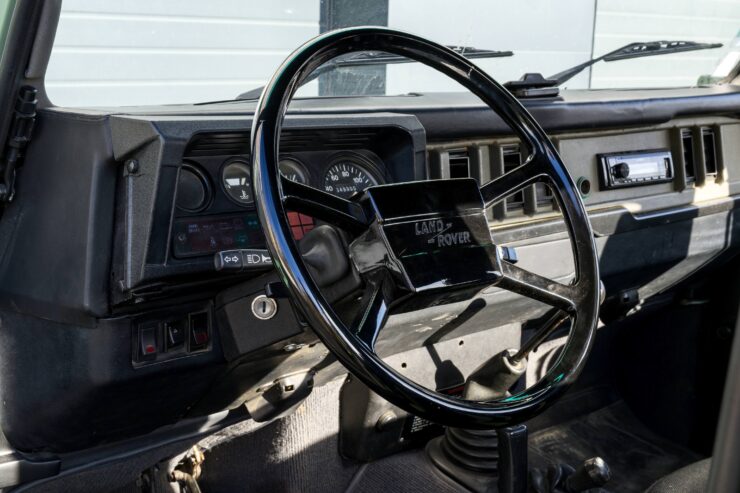
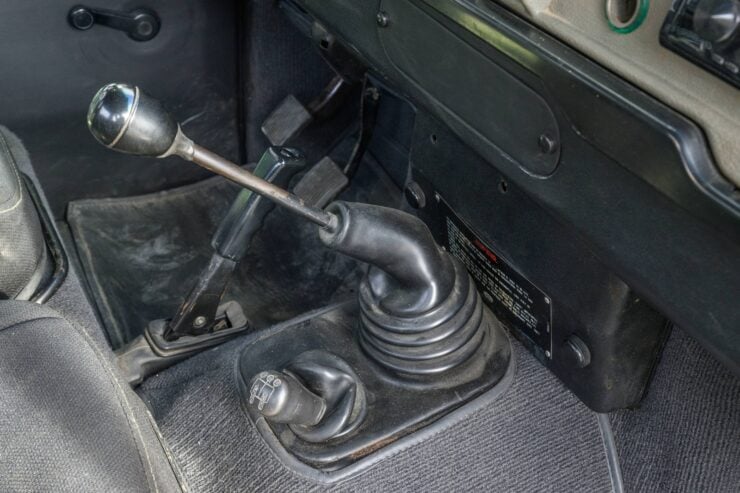
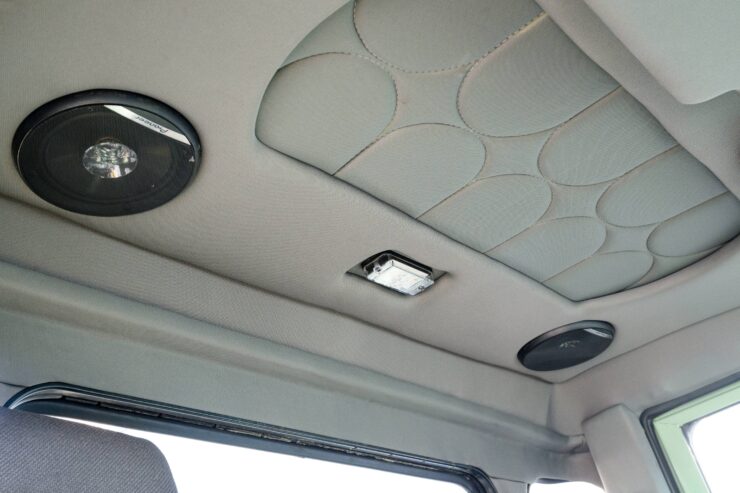
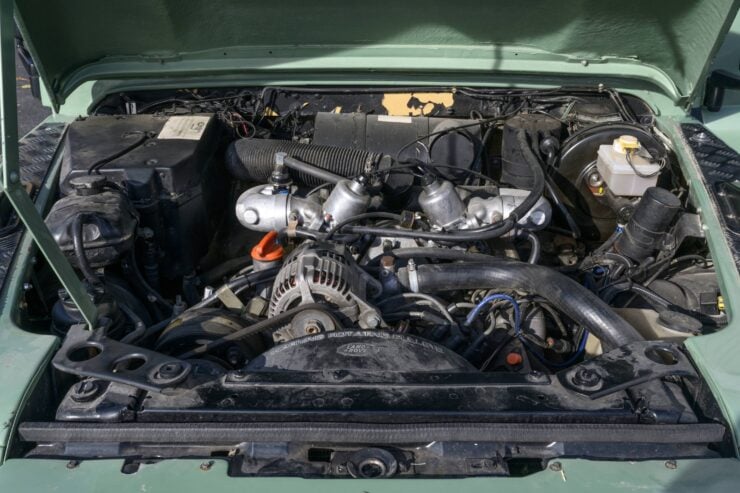
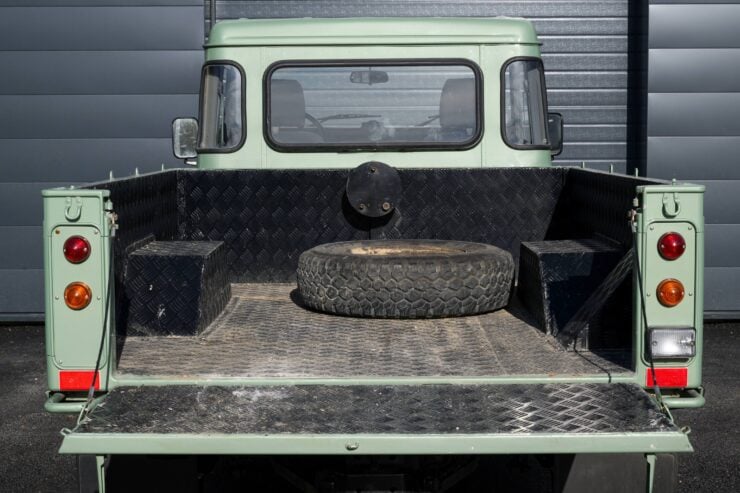
Images courtesy of Bonhams

